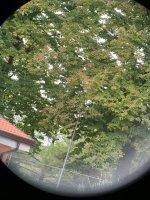dorubird
The unskilled mechanic blames his tools!

In the Habicht series there are no WA (wide angle) eyepieces. For example Habicht 7x42 has only 3 (three) elements eyepieces. None of them has complex WA. As I said in the post #7, Habicht eyepiece optical simplicity is an important factor in increasing light transmission (of course in addition to the quality of the glass and the anti-reflective coating).Is it the WA eyepieces in the 8x30 W and 10x40 W Habicht that cause them to show more glare than the 7x42 Habicht? Do more complex WA eyepieces in general show more
Nikon E2, for exemple, really has WA eyepieces with 6 elements ocular and does not have big problems with glare as Habicht 8x30 with only 3 elements eyepeieces. So we can have a WA with less glare. It seems that the Habicht glare problem is from elsewhere (from prisms and/or internal inner tube reflections?)
Last edited:











